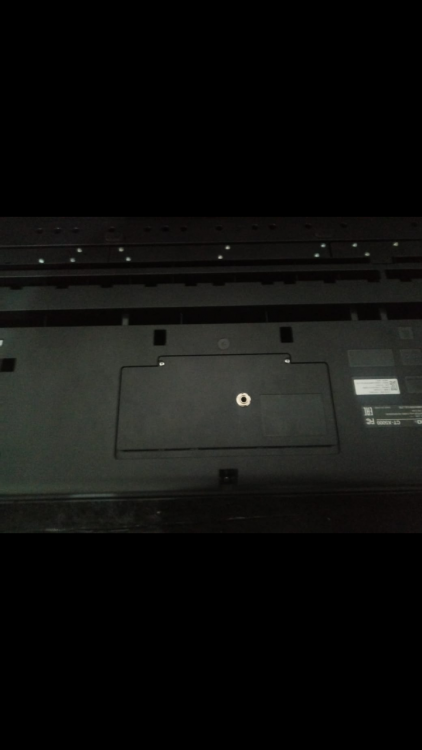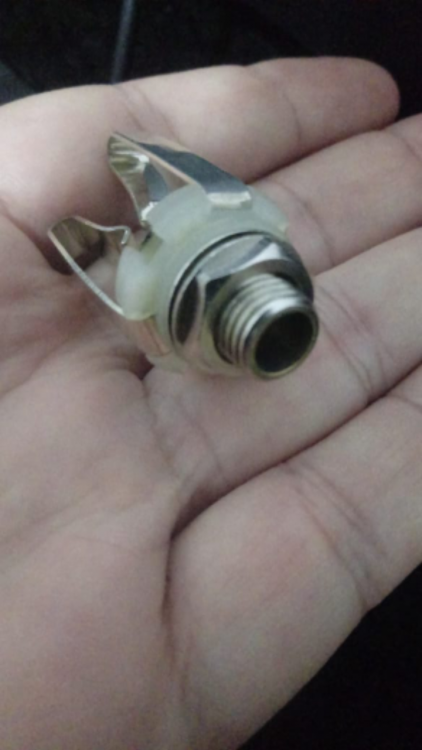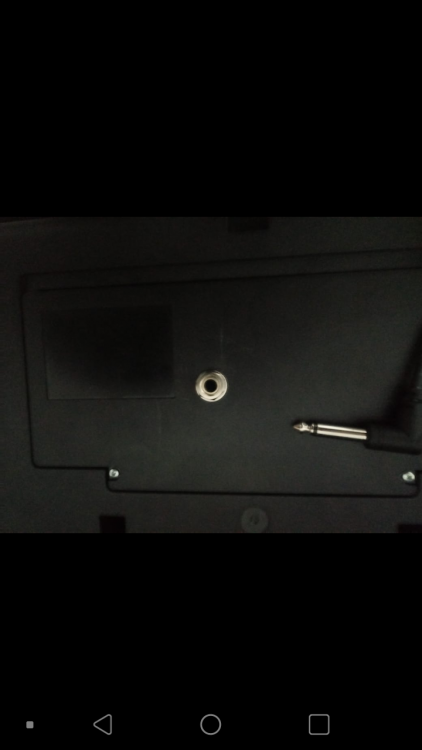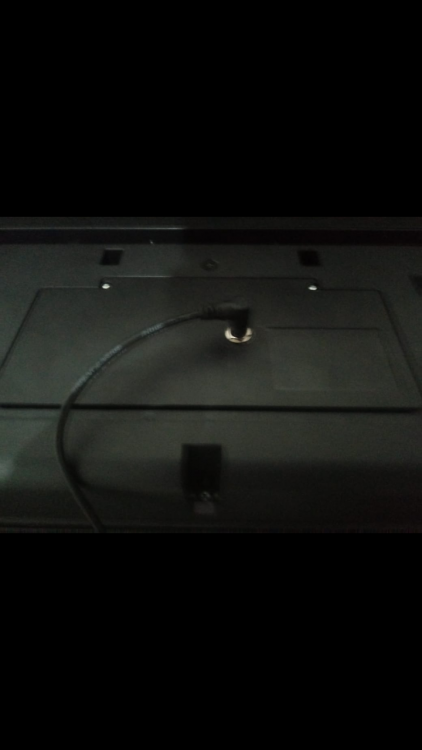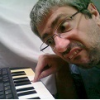Search the Community
Showing results for tags 'px5s'.
-
My humble review of the PX-5S after six months of use.
central616 posted a topic in Privia Pro PX-5S
Hi everyone. I own a XW-P1 for 4 years now, and since early 2018 I was Looking for a 88 key digital piano, because acoustic and electric piano sounds are maybe the weakest point of the XW. I was close to purchase a Kawai ES8 and later an Artis 88, but due to high inflation rates in my country, prices jumped 50% from one day to another. After this episodes, my frustration growed and my bank account shrinked. So during 2019 I abandoned the idea of a DP and I started looking for used upright. None were of my liking. The only one that sounds very good has a terrible paint job. But then, magic occurred. In ealy march I found a new PX-5S for the equivalent of 680 dollars. In my country this is cheaper than a PX-160, a Yamaha P-45 and half the price of a PX560. Without any dubt I brought it and a week later, I was unboxing it. First look: It's damn beautiful. I really love the design, and that pearled white colour is stunning. I don't understand at all the critics. I mean, why you would want another boring all matte black instrument?. The piano is also very well packaged and protected. Build quality: being all plastic, it's not on the same league as other keyboards, but that said, the materials used seems to be excellent, and that's great for transporting because of the lower weight. The power supply is small but also well constructed. The pedal is very light and springy, I don't like at all. The panel buttons are nice. The four knobs do the job but they look and feel cheap. The sliders have a very short travel. That's good on some situations when you are using them with you left hand while also playing a note, but you loose a lot of fine control. Interface: In an era of deep menus for editing, the PX-5S is rather accesible. The synth engine is rather simple (but very powerful) so programming a custom sound is not a nighmare. However, the screen es TINY. Why they put such a small and devoid of information screen?. Nonsense really. And things are worse considering the lack of continuous wheel for navigation and the arrow buttons being in a line instead of a cross pattern. The pc editor is nice., but I really hate to use the computer for creating music. Well, I have no choice. I'm getting used to it. Sounds: A thing that Casio does since ancient times is selling excellent instruments with underwhelming presets. At first, the PX-5S sounds rather sterile, but once you start tweaking a little, this instrument comes to life. The pianos are of great quality and detail. EP's are very good. Factory strings and synths are lackluster, but the potential is so big that you could create extremely beautiful ones. On the other hand organs are third rate, which I don't care since this instrument is not meant to be an organ clone. Same with guitars, violins, brass instruments and acoustic drums. They are old and low quality samples. Still you can get some usable ones due to the powerful DSP this piano has. Speaking of pianos, they have damper noise, string resonance and damper resonance (I think that's the name). I've found them rather annoying and fake sounding, specially the damper noise, so I disable it. The strings and damper resonance work well at a low level. There are a bunch of sounds not represented such as Mellotron, 12 string guitar, and Electric Grand. Controls: With 6 sliders, 4 knobs, and 2 foot pedals all assignable you can control most parameters you need in a live situation. I still miss a foot volume control (happily Casio included this in newer models) and the half pedaling support. I had a Yamaha P120 from 2002 and it already supported that feature. I suppose that keyboard's technology doesn't improve at the same rate as computers or cell phones... Extras: It has USB audio recorder, which is very helpful for doing demos. This really is a feature that most keyboards should have but is not the case. It can record external audio but I never used that because the audio inputs have a noise gate (the XW-P1 too) which cut the sound when it is at a not so low volume. A shame really. In conclusion: is not a all in one workstation, but it doesn't pretend to be that. It's a wonderful piano and a powerful syntesizer. Just that. If that is what you're looking for, this instrument is perfect. I'm very happy with this purchase which happily I did right before the quarantine! PROS Design Price Editing capabilities Use as a controller Weight CONS Small screen No half pedaling and Foot volume support No mono synth mode The biggest disappointment for me was the lack of a CP70 sound. Why Casio?... Why? Thanks for reading, and I really want to know your experience with the PX-5S. -
I don't frequent this forum nearly as often as I did years ago, but I'm glad to see a lot of dedicated users still here after over a decade. The fact that ten years has elapsed has really brought several things to light for me. The first, as I mentioned, is the continued dedication of PX-5S owners, old and new. The second is the fact that I haven't had to replace a worn-out instrument. My PX-5S gets a decent workout at least several times per week and has consistently done so since I got it shortly after Casio introduced it. I would not have expected that kind of longevity out of it. That said, it didn't take long before discovering that the keybed is LOUD. My daughter mentioned that it sounds like a hailstorm when I play. As most others with this complaint have discovered, it really isn't on the key strike, but on the release as the action returns to its rest position. This, more than anything, has made me look elsewhere for a different keyboard. However... Third, I'm still learning that this board was ahead of its time. Even when I research and try new competitors, I'm not all that impressed by the capability improvements that I expected a decade to bring. The PX-5S has knobs that you can assign to several EQ bands... or not. They can be whatever you want. Some of the new keyboards are advertising multi-function knobs or dedicated EQ knobs as though they're a new thing that was just discovered. The sounds on the new (ROMpler-type) keyboards don't seem to have changed much since 2010, either. There is some pretty cool processing and modelling available on other keyboards in addition to the samples, but it doesn't seem to make as much of a difference to me as it's advertised to make. Fourth, speaking of sounds, the ones on the PX-5S may not be incredibly impressive out of the box (don't get me wrong - some are!), but they're infinitely tweakable with envelopes and FX. Earlier this evening, I was trying to mimic the montuno pattern in Smooth (Santana). It didn't quite sound right. Then I realized a lot of montuno styles play in octaves, but I was using my left hand for bass notes. What if I add another piano layer and tune it up an octave? Bingo! Except I don't want to do that to the bass hand. No problem - click, click, click, and the range of the new layer only covers down to the bottom treble note. It could use a bit of EQ on the high mids. Hey, did I mention there's a knob for that? Then I thought, just for giggles, how close could I get to Santana's guitar sound? I flipped through the guitar tones and found that the Overdrive tone was surprisingly not too bad, but it could be better. I selected the Clean Guitar (which sounds nothing like Santana, of course), and punched in the Distortion FX. Still not close, but some tweaks to the wah and distortion levels, and finally adding the RStack amp, some reverb and chorus (assigned to sliders!) and I was impressed! It wouldn't fool a die-hard Santana fan, but with some pitch wheel work, it was actually impressive that sound was coming out of the PX-5S. It would be nice to have a monphonic mode for parts like this, but I admit I don't actually use it all that much for lead sounds that would benefit by mono mode. To get around the clacking keyboard issue, I thought I would try out VSTs hosted on my PC. If I was happy with that, I could shop for a keyboard almost solely on keybed feel and then just run it through the PC for sound. That worked, but there was a lot of fiddling involved in finding and installing a host, finding VST instruments, and running cables to a USB interface. A lot of the VST instruments advertised as "free" really aren't, or they don't sound like they're advertised to, or they aren't in the standard VST format (to force you to use that company's host). Even after setup, you still have to hook up cables, boot up the PC, start applications, and recall settings. When I just want to sit down, put on my headphones, and play and relax, I don't want to have to put myself through that. Fifth - I only have to sit down and push a button to have my keys ready to go. Sixth, I don't gig much, but when I did gig a little, the PX-5S is lightweight and super-portable. The only other equipment I had was a keyboard stand, bench, pedals, cables, and a DI box. The line-outs are not very impressive, especially if you have to run them for any length to the mixer or powered amps. The DI makes all the difference. So, here I am, with no replacement for my PX-5S on the horizon. I have been eyeballing the new Roland FP-E50. But I haven't convinced myself that it's worth the investment after considering all the points above. I've also considered "Frankensteining" the PX-5S into a compact keyboardless sound module, and then just buying a controller keyboard. But I think the odds of success are probably pretty low. I think I will just keep using the PX-5S until something goes seriously wrong with it and forces me to move on. Given how it has performed so far, that could still be quite awhile!
-
Olá a todos, Sou iniciante nesse meio das teclas, e gosto muito da banda Roupa Nova, por um acaso, alguém poderia me indicar alguns timbres localizados nesse fórum que chegue perto do que o Cleberson e o Feghali usam?
- 1 reply
-
- px5s
- roupa nova
-
(and 2 more)
Tagged with:
-
I have just created a audio track by using Casio CT-X5000, MZ-X500, PX-5S, XW-G1 and other models that are Pa4X and Genos. All the Tones and Rhythms are played by using Casio keyboards. Then I put all the things in daw and remixed and mastered it to make the sound experience bit high as much as possible. Now, Kick is used by Pa4X and MZ-X's Dance Kick which is also used in Old 1st gen Electropop rhythm. Marimba tone is used by Genos and rest all the things are played and selected by Casio Keyboards. Like, Rhythm is fully played by MZ-X500 Plucks are selected from CT-X5000 Pads are Played from XW-G1 And Last but not the least... Piano is played from PX-5S... Also, Vocals are selected and played from MZ-X500 All the functions are one-by-one recorded on MZ-X500 by connect the keyboard one-by-one via Insert In Stereo Terminals... As Wave is more pure then MP3, that's why MZ-X did a best job on every recording scenario. And my personal experience of recording on MZ-X500 is better the even Pa4X or Genos! After recording all the things I got 93 TAKES of wave file, and I puts it on the daw then remixed and mastered it. And here is the final result: This the the link of the video Also, Please Subscribe the channel and Like the video. 🙂
-
Wow, that is a long title. 😬 What I mean by it, is that I want to know, whether I can set up one of the knobs, via the stage setting, on the PX-5S, to dynamically alter the program number, that is sent out in a program change message to an external instrument? I have already learned at a stage setting can send a one program change message, when that stage setting is selected. I just want to ad the functionality, for the user, to change the value in that program change message with a knob turn, instead of having to go in to the menus. I wonder if it is done by sending a RPN or NRPN? Jay🎹
- 4 replies
-
- midi
- program change
-
(and 3 more)
Tagged with:
-
O Adaptador WU BT 10 tem alguma chance de funcionar no PX5s?
-
Here's an improvisation i did after spending the whole day getting to know my newly aquired XW-G1. 😄 In this session I use the XW-G1 for backing and a PX-5S for melody. I am using the stage setting "4Draw Organ" on the PX-5S and the sequencer on the XW-G1 is set to "Funk D&B". It's a raw take - no mastering whatsoever. I had so much fun doing this! 😊 Jay 🎹
-
- 23 replies
-
- pedal input
- casio ctx 9000
-
(and 35 more)
Tagged with:
- pedal input
- casio ctx 9000
- casio
- video
- casio ctx 5000
- assignable button
- youtube
- dsp
- assignable
- input
- input 3
- sustain pedal
- px-5s
- modultation effects
- pedal
- px5s
- mike martin
- pedals
- parameters
- pedal jacks
- wah
- mono jack
- ctx
- ctx5000
- jack
- modulation
- effect
- parameter
- rotary effect
- effects
- battery
- modulation button
- modulation pedal
- videos
- casio ctx 9000 in / casio ctx 5000
- assignable jack
- wah pedal
-
- 2 comments
-
Version 1.0.0
35 downloads
Ok, not technically from the 80's, but I justify it by saying it came out in nineteen-eighty-ten. 1. The hip-hop scratch in the beginning is the low E, F, and G. 2. Slide whistle is C#6. The sad attempt at mimicking the sample voice is at C6. 3. Sax is in octave 5. 4. Hip-hop breakdown percussion sounds for the bridge are the bottom A and Bb. GrooveIsInTheHeart.mp3 -
Version 1.0.0
61 downloads
1. The arpeggiator is triggered from the highest G, B, and C. Start with pedal 1 down for arpeggiator synth zone on. Also, start with Slider 6 down. 2. Pizzicato: play octaves 5 and 6. 3. When you start the percussion, release pedal 1 to quiet the arpeggiator. If you do it with one foot, it's like stopping at a red light. 4. Slider 6 turns on the "chime" voice for the instrumental. 5. Press pedal 1 again at the end to bring the arpeggiator synth zone back in. (I cut the MP3 short because I totally messed up and didn't want to re-record the sample.) HereComesTheRainAgain.mp3-
- song ready
- 80s
-
(and 1 more)
Tagged with:
-
Version 1.0.0
29 downloads
Performance notes: 1. To start, begin percussion (pedal 2) and bass quarter notes. 2. When synth comes in, hold down pedal 1 and play bass chords in 2nd inversion (root in middle). Pedal 1 will trigger the arpeggiator to play the bass quarter notes so your right hand is free for the... 3. "Bell" synth is in the highest octave. 4. Guitar for verse is in the 2nd highest octave. OutOfTouch.mp3 -
Version 1.0.0
79 downloads
This one is maybe a bit too ambitious, but here it is. There are two stage settings and two phrases. The second stage setting is specifically for the bridge. One of the two phrases is set to the main phrase player for percussion. The other is mapped to the arpeggiator in zone 1. The latter is used for the percussion intro for the song. Instead of a quick sample MP3, I've included the whole song as I would play it live (hopefully, without the cringey mistakes) so you can see how it all fits together. Verse/Chorus Stage setting (Rio_____.ZPF): 1. The random arpeggiator uses the top E, F#, and B 2. Intro percussion is started by pressing the lowest C# (or lower) key. Start the main percussion (pedal 2) on the first downbeat of measure 5. Make sure when installing the files that the zone 1 arpeggiator points to the RIOINTRO.ZPH phrase. 3. Distortion guitar is in octave 5 4. Chorus "strings" synth is octave 3&4 5. At the beginning of the chorus, "reset" the percussion by pressing the stage setting button again. This compensates for the extra two measures in the song (the percussion phrase is four measures long). If you don't do this, the percussion won't feel right because it will be two measures off. Bridge stage setting (RioBridg.ZPF): 1. Originally, this was set to switch from the main stage setting with the pedal using a CC, but it turns out there is a problem with this. A non-hex-tone will sustain over a stage-setting change, but only if it's changed with a Program Change. The CC method of changing stage settings apparently doesn't work like this, so I had to time the switch just right so that the bass didn't cut out. instead, I gave up on that and just change it with the normal stage setting buttons. 2. This was a lucky bonus: the arpeggiator continues playing across a stage setting switch! So the "swirling" synth in the background makes use of the arpeggiator from the previous stage setting and you don't have to do anything to trigger this. 3. The voice for the solo I didn't want to sound too much like a saxophone, because... well... I'm playing a keyboard, not a sax, so I don't feel like it would have come across that well. There's a sax in one of the hex layers to at least suggest a sax lead. The synth also swells slowly for the last note held from the solo. I put Pedal 1 on sustain so you can either play a snare (which I decided I didn't like, but it's in the MP3 anyway), or get ready to switch stage settings. 4. When you switch back to the first stage setting, the arpeggiator switches back to the random pattern. I love my PX-5S! Rio_full.mp3 -
Version 1.0.0
25 downloads
Performance notes: 1. Hold pedal 1 to enable piano accompaniment at beginning (so you can play the intro synth) 2. On count 1 downbeat, start by starting percussion (pedal 2), piano accompaniment (pedal 1 down and F6), start playing bass. 3. Intro synth is in the top octave. 4. After the intro synth part is done, take over the piano accompaniment part and release pedal 1. Borderline.mp3 -
Version 1.0.0
34 downloads
Performance notes: 1. Arpeggiator is the top C#, E, F#, A, B 2. The pedal turns on the delay for the piano synth chords. I wanted to do this with an arpeggiator, but there isn't a way to lock an arp on one zone, but not on another. This is close enough. YouSpinMeRoundSample.mp3 -
Version 1.0.0
101 downloads
Performance notes: 1. Opening choir synth on A5 (velocity layered - play loud) 2. Opening guitar riff: hold choir on A5, play the riff in octave 6, but softly to not trigger the choir 3. Full percussion comes in with pedal 1 4. Chords are in octave 4, velocity mapped. Light velocity plays just the electric piano for the verse. 5. For the instrumental, play in octave 6, but with higher velocity to trigger chorus background pad behind guitar. EverybodyWantsToRuleTheWorld.mp3 -
PX5-S https://soundcloud.com/gelorge-nevada/novyy-god
-
Hy Guys. Now, I bring the my song. She Call "Presente póstumo" (posthumous gift in portuguesy). It's a instrumental music. I created for one people so special for me. She died last year. Yesterday, i remembered for a great people and the memories give me inspiration for creat this. Stage setting: piano sospiro. Márcio Diass - Presente Póstumo.mp3





.thumb.jpg.0f751c1eb8c878bc440b60dd55b26dfe.jpg)
